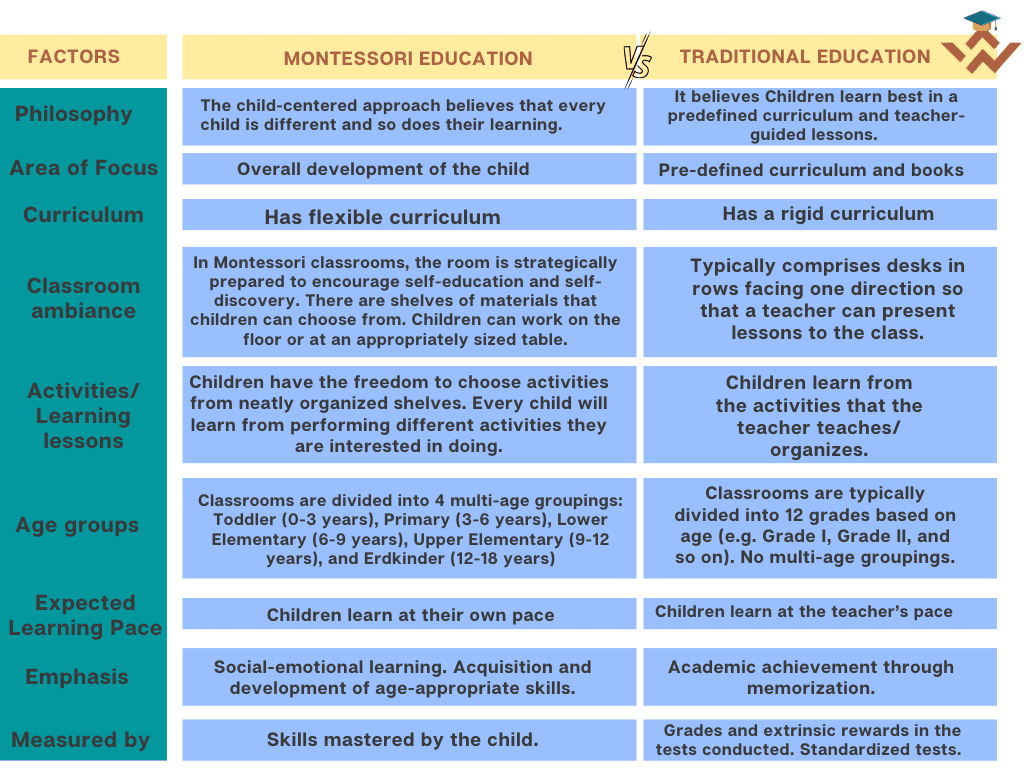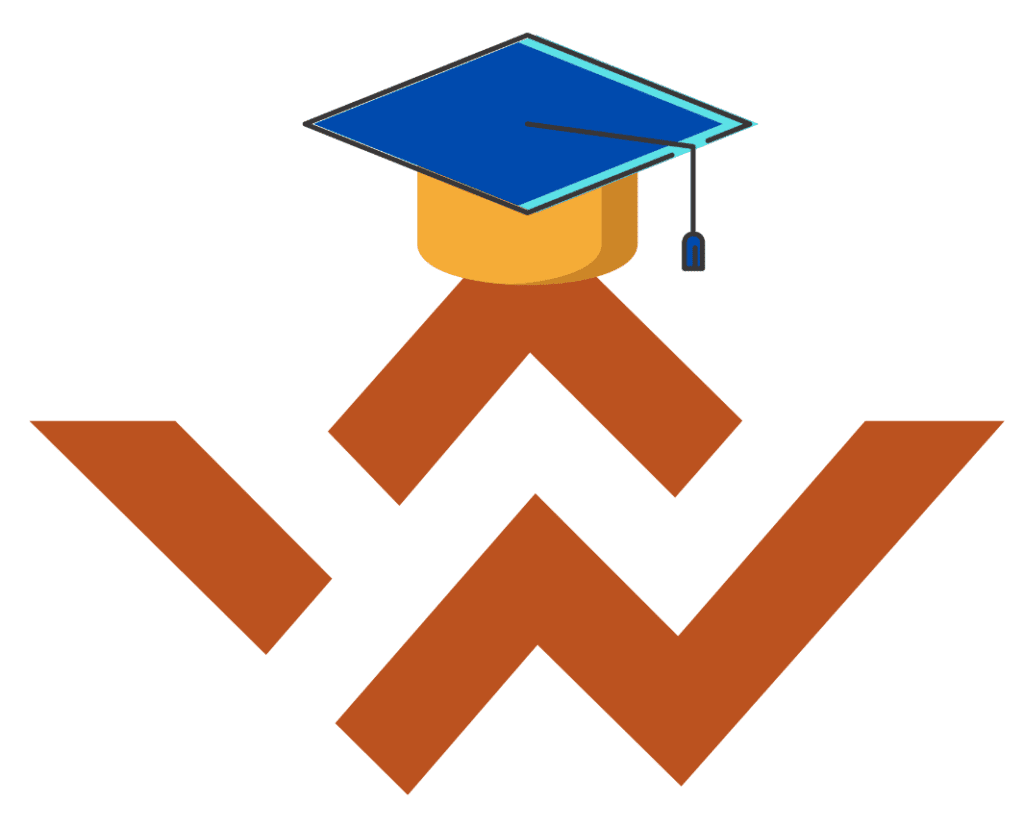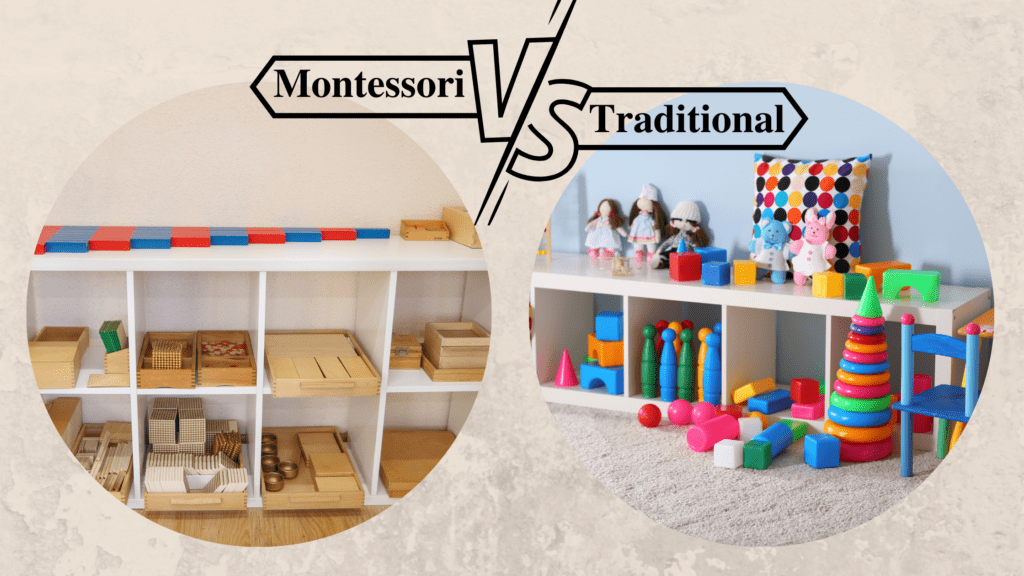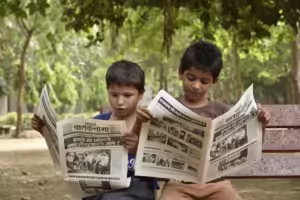Education is an essential aspect of human life. It provides individuals with the necessary knowledge and skills to succeed in life. Quality education is a fundamental right that should be accessible to everyone, regardless of their socioeconomic background.
Children’s first five years are the most formative years. It can also be challenging to choose the right preschool for your child. When parents plan their child’s preschool, they carefully consider various factors. These include the curriculum offered, the school’s location, the type of education board, and how the child will learn beyond academics. It is crucial for parents to analyze these parameters in order to make the best decision for their child’s early education. We all are familiar with the traditional model of education, where children are grouped by age and taught using a set curriculum from textbooks. Have you ever thought about a different way of teaching that involves immersive activities, enabling children to explore and follow their own passions while introducing novel concepts and ideas? This is how Montessori education works. Let us delve more into it and understand how Montessori education is different from traditional education. This article will also guide us through how it helps in the development of the whole child.
Together, let’s first understand how Montessori differs from traditional education and make an informed decision!
What is Traditional education?
Traditional education, on the other hand, is a teacher-centered approach to education that emphasizes the transfer of knowledge from the teacher to the student. In a traditional classroom, teachers are the primary source of information, and students are expected to absorb and memorize what they are taught. The curriculum is often standardized, and students are expected to meet certain benchmarks at specific points in their education.
In a traditional classroom, students are often required to learn in a structured environment, with little opportunity for self-directed learning. They are expected to follow rules and procedures, and there is often little room for creativity or exploration.
What is Montessori Education?
A Montessori program focuses on leveraging innate childhood traits like curiosity, creativity, self-discovery, the need for order, and the desire to respond to sensory input. The Montessori Method is based on hands-on learning and collaborative play.
Montessori education is a child-centered approach to education that emphasizes independence, freedom within limits, and respect for a child’s natural psychological development. The Montessori method is based on the idea that children learn best when they are given the freedom to explore and discover on their own. Montessori classrooms are designed to encourage self-directed learning and exploration, and teachers act as facilitators rather than lecturers.
In a Montessori classroom, children are given the freedom to choose what they want to learn and how they want to learn it. They are encouraged to work at their own pace and are given the opportunity to collaborate with their peers on projects. The Montessori method also emphasizes the importance of practical life skills and encourages children to take responsibility for their own learning.
Also Check: Difference Between Montessori and Kindergarten Schools
Montessori vs Traditional Education
“The conceptions of the old schools, where teaching continues in the same way as in times profoundly different from ours, are clearly inadequate” -Maria Montessori (1949/1979)
Montessori education and traditional education have different approaches to teaching and learning. Let us understand how.
Philosophies
Every school has its own educational philosophy. But there are some basic differences between the Montessori and Traditional educational methods.
Montessori education emphasizes independence, freedom within limits, and respect for a child’s natural psychological development. On the contrary, Traditional education emphasizes the transfer of knowledge from the teacher to the student.
Curriculum
The curriculum consists of the topics, lessons, and subject areas that a child will study in class. Children learn a lot during their formative years, as it is a time of exploration. And the Montessori classrooms place a strong emphasis on personalized learning to encourage children to learn at their own pace. The Montessori curriculum does not impose a rigid structure or demand that a child reach milestones by a certain age.
In contrast, traditional school teachers typically expect children to attain the same milestones at the same time as part of a standardized program. Rather than allowing students to learn at their own pace, traditional schools frequently offer the same subjects to all students simultaneously.
Environment
A Montessori classroom is well-organized and clutter-free to eliminate distractions. The materials and activities are carefully kept to encourage children’s natural curiosity and desire to learn. Also, the classroom is designed to be child-friendly and accessible, with low shelves and child-sized furniture to make it easy for children to access and use the materials.
Apart from the physical environment, Montessori classrooms also provide a unique approach to education. Teachers act as guides and facilitators, allowing children to take ownership of their learning and explore topics that interest them. Children are encouraged to work independently or in small groups, fostering collaboration, communication, and problem-solving skills. In this way, the Montessori classroom provides a holistic and child-centered approach to education, empowering children to become lifelong learners.
Must Read: 20 Montessori Practical Life Activities that can be Setup at Home
Classroom
In Montessori classrooms, the teacher acts as a guide and mentor, helping students explore their interests and learn new concepts. This method of teaching allows students to take charge of their learning, building confidence and independence. Additionally, Montessori classrooms teach practical life skills, such as cooking, cleaning, and caring for the environment. These skills help students grow and develop independence.
Traditional classrooms may focus more on academic subjects, like reading, writing, and math, with less emphasis on real-life applications. While academic skills are important, practical life skills are just as valuable. That’s why Montessori classrooms offer an education that prepares students for success in all aspects of life. As a result, students who experience Montessori education are often more confident, independent, and motivated to learn.
Age groups
Montessori education has a unique approach to classroom organization that fosters a different approach to learning. Students of different ages learn together, which is a departure from traditional schools that group children of the same age into one class. This practice encourages a dynamic and diverse learning environment that is beneficial to students in many ways.
In Montessori classrooms, students are grouped into specific age ranges, such as 0-3 years, 3-6 years, 6-12 years, and 12-18 years. This allows students to learn at their own pace while still being exposed to the ideas and experiences of their peers. Younger students can learn from their older classmates, while older students can reinforce their knowledge by teaching younger students.
This approach also promotes a sense of community and cooperation among students. Because they are not competing with each other, they can work collaboratively to achieve common goals. Students are encouraged to help each other and to respect each other’s differences.
Teaching Methods
One of the best ways to observe a school’s implementation of its educational philosophy is by examining its teaching methods.
Montessori resources emphasize unrestricted creativity, self-education, and self-correction. Teachers arrange the classroom to accommodate the students, rather than preparing the students for the classroom. Montessori teachers identify each child’s unique potential by observing their interests and levels of comprehension.
Traditional teaching methods used in schools and preschools involve teaching everyone the same thing at the same time. For example, a lesson on the alphabet or a new number is taught to the entire class by the teacher, who then structures the rest of the day’s and week’s lessons around that introduction.
Outdoor Time
Traditional schools call outdoor time “recess” as a break from lectures. Montessori education embraces outdoor activities as part of the learning process. Children learn about science, ecology, and sustainability while exploring the environment. Outdoor reading spaces and creative writing activities inspire literacy skills. A holistic learning experience encourages a love for learning and appreciation of nature. Outdoor time can be more than just a break from class; it’s an opportunity to explore, discover, and learn in an engaging way.
Interruptions
Because Montessori educators practice respect, they value a child’s ability to focus. Teachers let students finish their work if they are completely absorbed in the session.
In contrast to traditional classrooms, where students are guided through each project regardless of their level of interest, Montessori tries to minimize interruptions to the children’s workflow.
Progress Report
The primary objective of traditional education is knowledge transfer. This is typically accomplished by the teacher presenting information to the students and then assessing whether the students have learned it. In traditional schools, assessments are a necessary part of the process. At the end of each year, a child is given a grade or marks based on their performance in exams. While this system has its advantages, it can also be limiting. It does not allow for students to learn at their own pace or to explore topics in-depth based on their individual interests.
In contrast, a Montessori school takes a different approach. The emphasis is on allowing students to learn at their own pace and to explore topics that interest them. The teacher acts as a guide, rather than an instructor, providing resources and support as needed. There are no grades or exams to determine a child’s progress, which can be both liberating and challenging. The focus is instead on developing the child’s individuality and creativity through hands-on learning experiences. This approach can lead to a deeper understanding of concepts and a greater love of learning, which is invaluable for success in life beyond the classroom.
Montessori vs Traditional Schools
| Traditional Schools | Montessori Schools |
| Rigid curriculum | Flexible curriculum |
| Same-age classrooms | Multi-age classrooms |
| Teachers instruct at their pace | Children learn at their own pace |
| Constant guidance limits the productivity | Free to make own discoveries |
| Teacher-centered environment | Child-centered environment |
| Rigid rules and restricted spaces | Children have the liberty to freely move across the defined area. |
| Limited growth | Overall Development |
Final Words
In conclusion, both Montessori education and traditional education have their advantages and disadvantages. It is up to you to decide which approach to education is best for your children. However, it is important to note that Montessori education has been shown to have a positive impact on a child’s social, emotional, and academic development. When choosing the education system, it is important to keep in mind a child’s needs and learning styles. Some children may thrive in a more structured environment, while others may benefit from the freedom and self-directed learning offered by Montessori education.
It is also worth noting that many traditional schools have begun incorporating elements of Montessori education into their curriculum in order to provide a more well-rounded and individualized learning experience for their students. Likewise, some Montessori schools have adopted more traditional teaching methods in order to better prepare students for standardized testing and other academic requirements. Overall, the debate between Montessori education vs traditional education is ongoing, and there is no one-size-fits-all answer. The most important thing is to ensure that each child is receiving a high-quality education that meets their unique needs and prepares them for success in the future.
I hope this helped you in your decision-making process. Think wisely while choosing the pattern of education for the child. Do remember, each child is different and has a different potential to flourish.
FAQs
- Which is better Montessori or traditional?
There is no definitive answer as to which is better between Montessori and traditional education, as it depends on individual preferences, learning styles, and the needs of the child. Both approaches have their strengths and weaknesses, and what works best for one child may not work for another. It’s essential to consider each child’s unique characteristics and educational goals when choosing an educational approach.
- Can you start Montessori at 4 years old?
Yes, many Montessori schools accept children as young as 2 to 3 years old, and it is common for children to start Montessori at 4 years old. Montessori education is designed to accommodate children of various ages and allows them to progress at their own pace. Starting at 4 years old can provide a solid foundation for a child’s educational journey within the Montessori method.
- How long should a child be in Montessori?
The duration a child spends in Montessori education can vary depending on individual circumstances and educational goals. In general, children can attend Montessori programs from infancy (around 6 months) to 12 years old. Some parents choose to have their child complete the full Montessori cycle, from preschool to elementary, which is approximately 3 to 6 years. However, the decision on how long a child should be in Montessori ultimately depends on the child’s needs, progress, and available educational options in their area.



